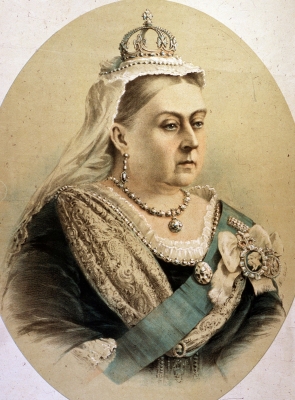
This system of governance was instituted on 28 June 1858, when, after the Indian Rebellion of 1857, the rule of the British East India Company was transferred to the Crown in the person of Queen Victoria (who, in 1876, was proclaimed Empress of India).
Queen Victoria took her duties as Empress very seriously and when her Golden Jubilee came around in 1887 she made every effort to showcase her ‘jewel in the crown of the British Empire’. She hosted lavish banquets and parties for Indian princes and European nobility and rode in elaborate processions accompanied by the Colonial Indian cavalry. Indian attendants were brought to the royal household to help with the festivities as well. Victoria took a liking to one of her new servants in particular: Abdul Karim. Soon the twenty-four-year-old’s role changed from patiently waiting at tables to teaching the Queen to read, write and speak in Urdu, or ‘Hindustani’. The Queen wanted to know everything about India, a place where she ruled but could never visit. Abul told her all about Agra, from the local fruits and spices to the sights and sounds of his homeland. It was not long before he became her ‘Munshi’, or teacher, and they began a friendship that would last over a decade.
India in Victoria’s time was rife with such unrest, in addition to sweeping famine and widespread change. The census of 1871 aimed to record the age, caste, religion, occupation and education level of the entire population in order to better govern. It found the total population to be 238,830,958. British-born subjects in India (excluding the army and navy) numbered just 59,000. India is now the second most populated country in the world with 1,326,801,576 residents as of July 2016. The population density in England in 1871 was 422 people per square mile on average, whereas in India it ranged from 468 in Oude to just 31 in British Burma. The census of 1871 failed to fully report on Indian subject’s level of education, but came to the conclusion that only around one in 30 men (women were not included in these reports) had received the ‘barest rudiments’ of education. In 2016 81% of Indian men over 15 years and 61% of women were literate. The census also found the population to be expanding at the rate of 3% annually, which the report writers thought to be ‘an improvement doubtless due to the better administration of the country since it came under the British rule.’
Picture Credit : Google

